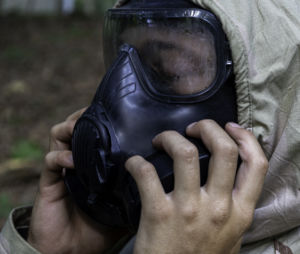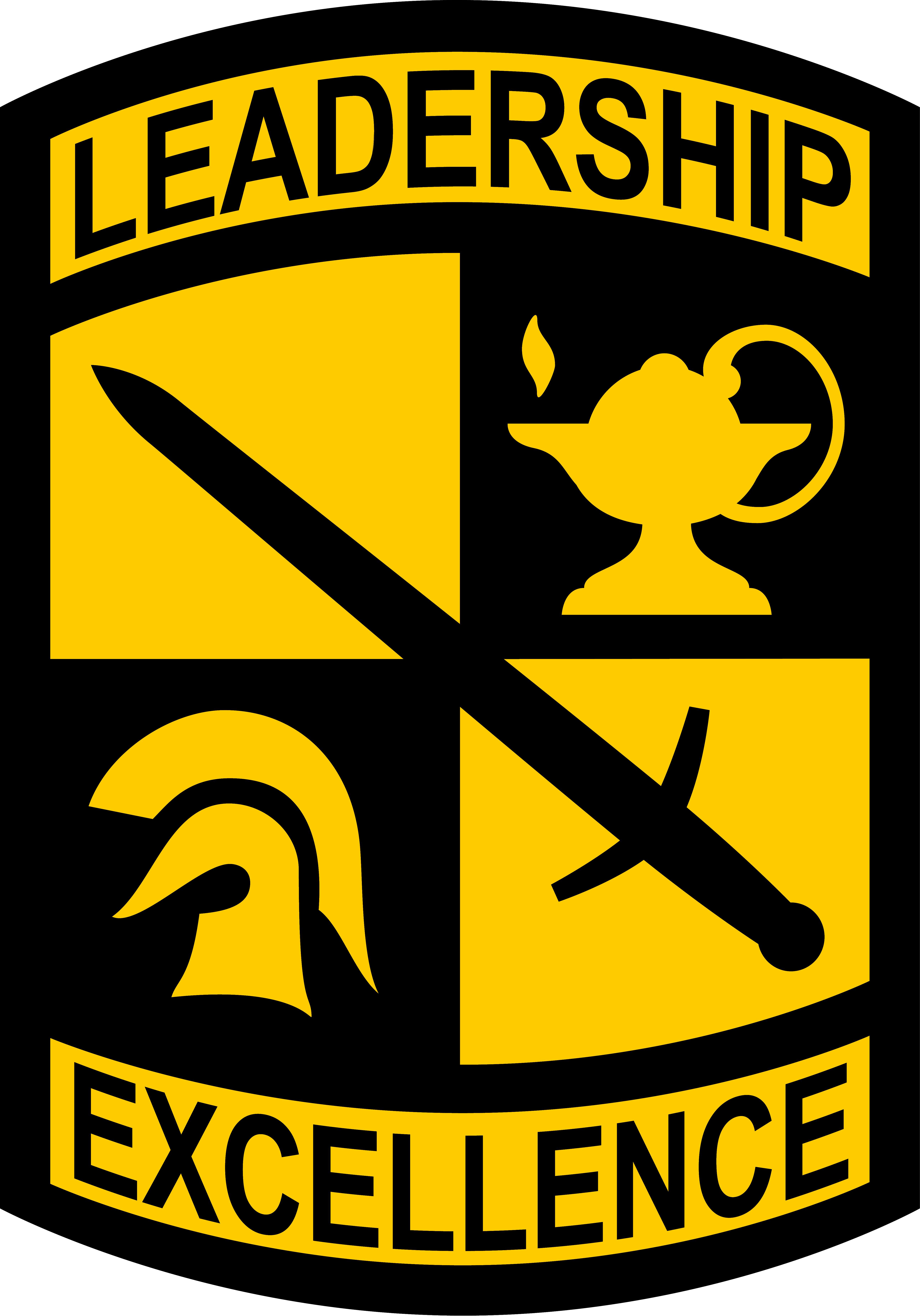
Cadet Henry Geiger from West Virginia University with 2nd Regiment, Advanced Camp,
seals his M51 Promask at the Chemical, Biological, Radiological and Nuclear chamber
on Fort Knox, KY., June 20, 2024. The purpose of CBRN training is to help Cadets build
confidence and trust in their equipment, to ensure they will be able to make it function
properly when needed. |Photo Credit: Ayiana Andrella, Ohio University, CST Public Affairs Office
FORT KNOX, KENTTUCKY- Braving the challenge
Cadets with 2nd Regiment, Advanced Camp, face the
Chemical, Biological, Radiological and Nuclear
chamber on Fort Knox, June 20, 2024.
The purpose of CBRN training is to help Cadets build
confidence and trust in their equipment, ensuring they
will be able to make it function properly when needed.
Despite the fear of entering the chamber, this exercise
is designed to instill courage in Cadets. Knowing they
will face CS gas inside, yet confronting their fears and entering regardless, teaches them resilience.
Before entering the chamber, Cadets receive detailed
instruction to ensure their Mission Oriented Protective
Posture is correct. They learn about the four levels of MOPP gear,
with MOPP3 consisting of the M51 Promask, boot covers, gloves, hood, and
overgarment. After the briefing, Cadets are given approximately 40 minutes to practice
and get comfortable with the equipment. During testing, they are timed and given
exactly 7 minutes and 9 seconds to complete the process. The test is divided into three
sections: Cadets have 9 seconds to put on their mask, seal, and clear it; 2 minutes to
decontaminate exposed skin and add the next protective layer with gloves and hood;
and the final 5 minutes to adjust their gear.

Cadet Jacob Brown from Texas State University with 2nd Regiment, Advanced Camp, finishes his test at the Chemical, Biological, Radiological and Nuclear chamber on Fort Knox, KY., June 20, 2024. Cadets are given 7 minutes and 9 seconds to pass their Mission Oriented Protective Posture test they must complete this before they enter the CBRN chamber. |Photo Credit: Ayiana Andrella, Ohio University, CST Public Affairs Office
Knowing she would be faced with the CBRN chamber for the first time Cadet Anjali
Biswal from American University, DC., sought advice from prior service members in her
platoon and learned to “embrace the suck.” Knowing her battle buddies were going in
with her gave her the confidence she needed to face her fear of the unknown. “You’re all
in it together, literally,” said Biswal. “You walk in, take your masks off, and hold each
other’s shoulders. You go in together, and you walk out together.”
Before joining ROTC, Cadet Biswal had already experienced the profound impact of
saving a life. The summer before she joined, she saved a man from being hit by a metro
bus. This pivotal moment inspired her to seek fulfillment in the Army, driving her to join
ROTC with the desire to help more people.

Cadet Nolan Apostolu from the University of South Florida with 2nd Regiment, Advanced Camp, breaks the seal of his M51 Promask at the Chemical, Biological, Radiological and Nuclear chamber on Fort Knox,
KY., June 20, 2024. The purpose of CBRN training is to help Cadets build confidence and trust in their equipment, to ensure they will be able to make it function properly
when needed. |Photo Credit: Ayiana Andrella, Ohio University, CST Public Affairs Office
Having previous experience with the CBRN chamber, Cadet Henry Geiger from the
University of Minnesota went in anticipating some discomfort but knew that after walking
out the door, breathing would become easier again. “My tactics going into it involved the
mindset of ‘I’ve held my breath before, I can do it for 30 seconds,’” said Geiger. “But
they make you breathe it in and sing, so that didn’t work out for me.” Laughing off the
pain, Cadet Geiger emphasizes that once it’s over, it’s not that bad, and by the time you
walk back to the turn-in station, the pain subsides.
Having previously served in the National Guard after enlisting in high school, Cadet
Geiger realized he wanted to lead and help people. “I saw leaders in stressful
environments and understood how crucial a good leader is to the well-being of their
troops,” said Geiger. “So, I wanted to be a leader.” He believes that going through
exercises like CBRN are essential for becoming an Officer. Reflecting on his experience,
Geiger noted that if he were a lower enlisted soldier and knew his platoon leader wasn’t
willing to go into the CBRN chamber with him, it would be difficult for him to trust them.
Although Cadets enter the Chemical, Biological, Radiological, and Nuclear chamber
aware of the discomfort and pain they will endure, they come together as a team to get
through it. Recognizing the importance of learning to properly protect themselves and
gain confidence in their equipment, Cadets finish this exercise stronger and one step
closer to completing their Cadet Summer Training.

